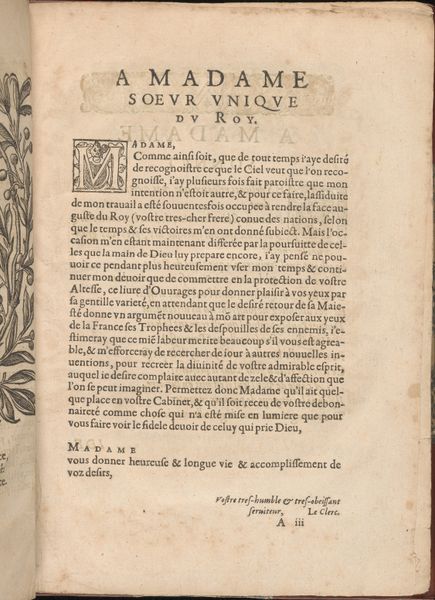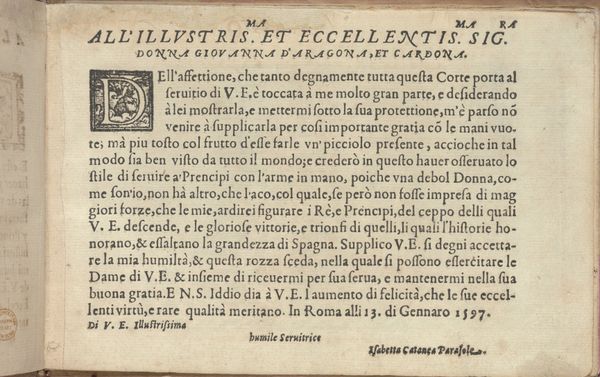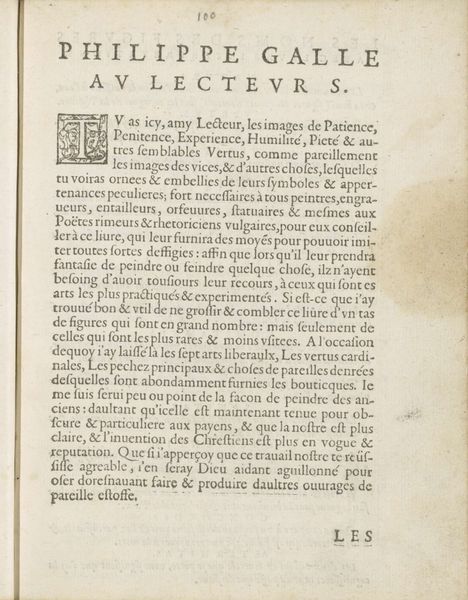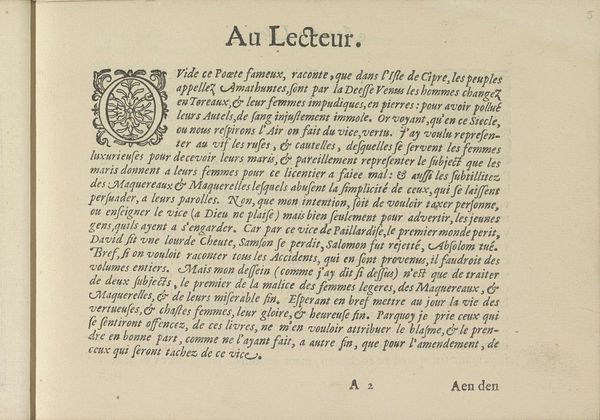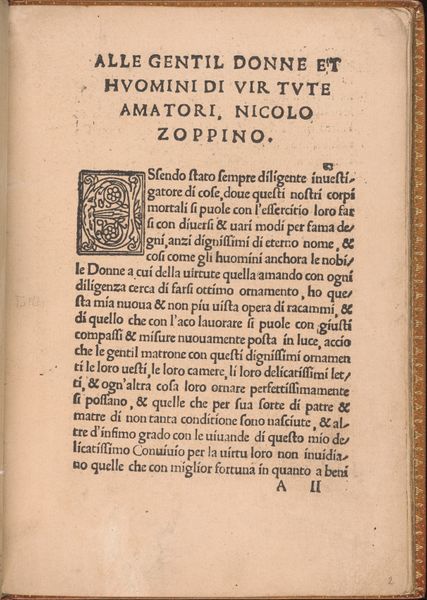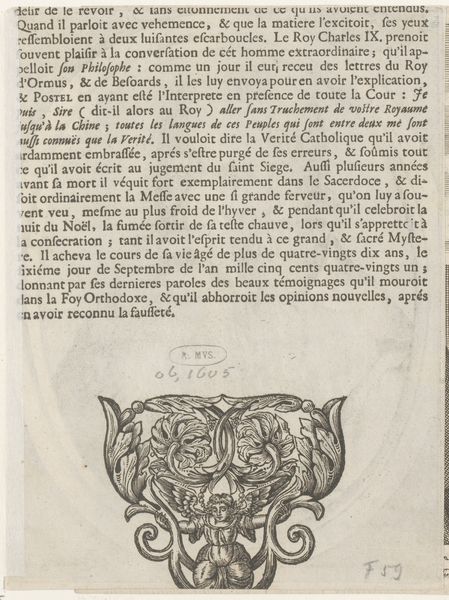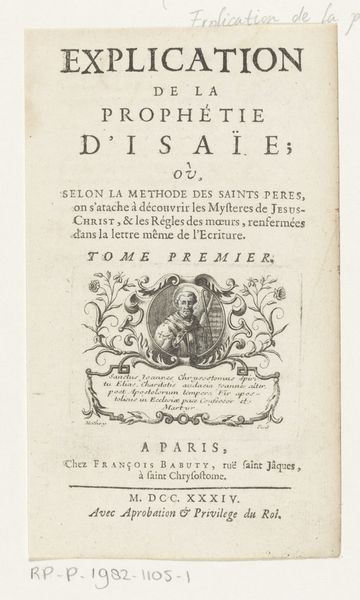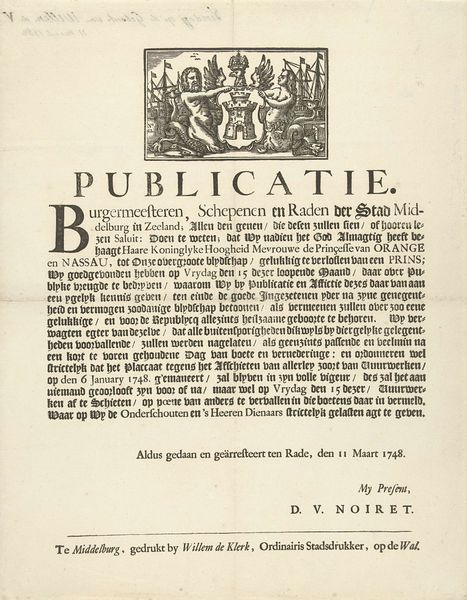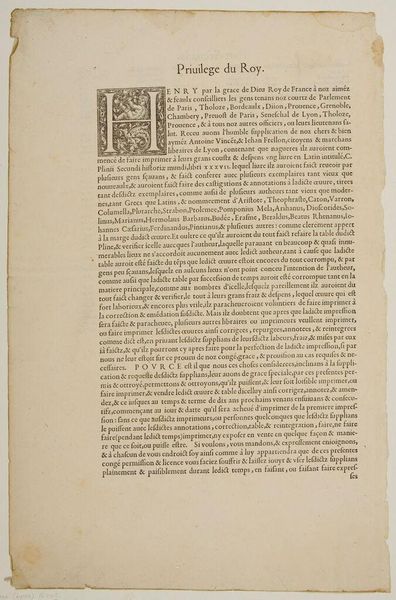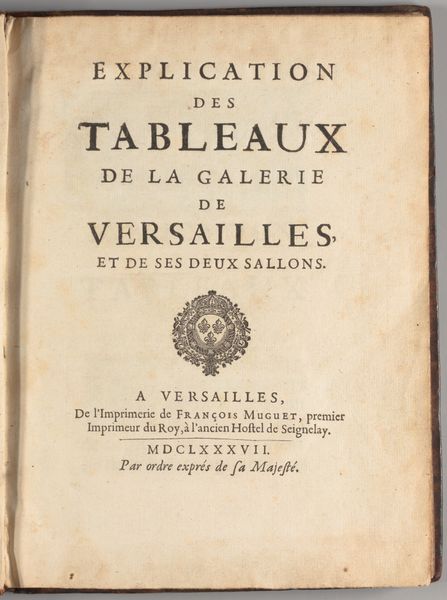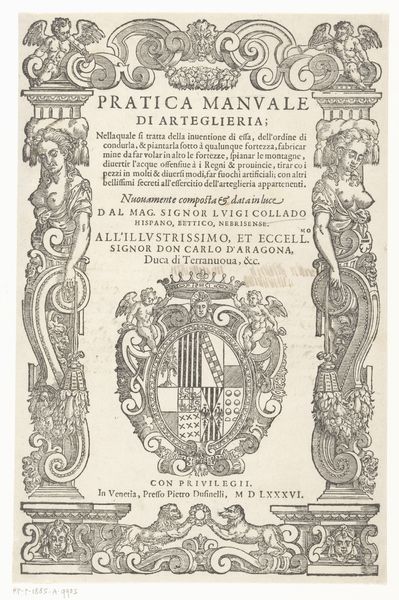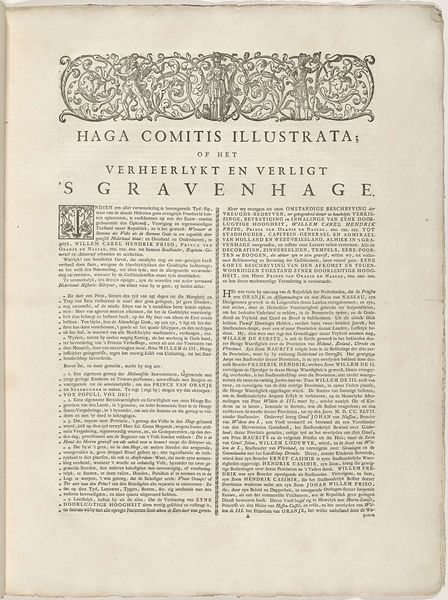
Concerning the manner in which the ancient Romans distributed the water for the use of the city. Text sheet with the letter "V" 1761
0:00
0:00
print, paper, engraving
# print
#
paper
#
text
#
11_renaissance
#
classical type
#
italian-renaissance
#
engraving
Dimensions: 593 mm (height) x 445 mm (width) (bladmaal), 98 mm (height) x 148 mm (width) (plademaal)
Editor: Here's a fascinating text sheet from 1761 by Giovanni Battista Piranesi titled, "Concerning the manner in which the ancient Romans distributed the water for the use of the city. Text sheet with the letter \"V\"". It’s an engraving on paper, and the detail is just incredible. The mood seems quite scholarly, almost like an architectural treatise. How do you interpret this work within its historical context? Curator: This print gives us insight into the historical role of printed imagery. It not only explains, but also legitimizes. Consider how Piranesi is representing the systems of Roman water distribution. He's not just showing us the mechanics, he's also attempting to document and almost enshrine them as a critical piece of civic engineering. Think about the socio-political implications. Editor: So, it’s about more than just showing how the aqueducts worked? Curator: Precisely. This engraving reinforces the idea of Rome as a pinnacle of civilization, particularly regarding public works and organization. Piranesi positions himself as a chronicler of this legacy. The act of printing, and disseminating such imagery, contributed to shaping a collective memory, a specific visual language surrounding Roman achievement. Who benefits from that, and how? Editor: That makes sense. By presenting these Roman methods in such detail, he's contributing to a certain historical narrative. It is all about influencing public perception, of course, with architecture as a main ingredient in socio-politics. Curator: Yes, consider how this imagery, circulated as a print, contributes to shaping architectural and engineering aspirations within a specific intellectual climate of the 18th century. So, what’s your biggest takeaway? Editor: It is how deeply interwoven art, architecture, and politics are. The print isn't just documentation; it's actively participating in shaping the cultural landscape and historical perception. Curator: Exactly. Recognizing that the seemingly straightforward depiction can embody a range of ideological purposes, now you’re starting to see!
Comments
No comments
Be the first to comment and join the conversation on the ultimate creative platform.


